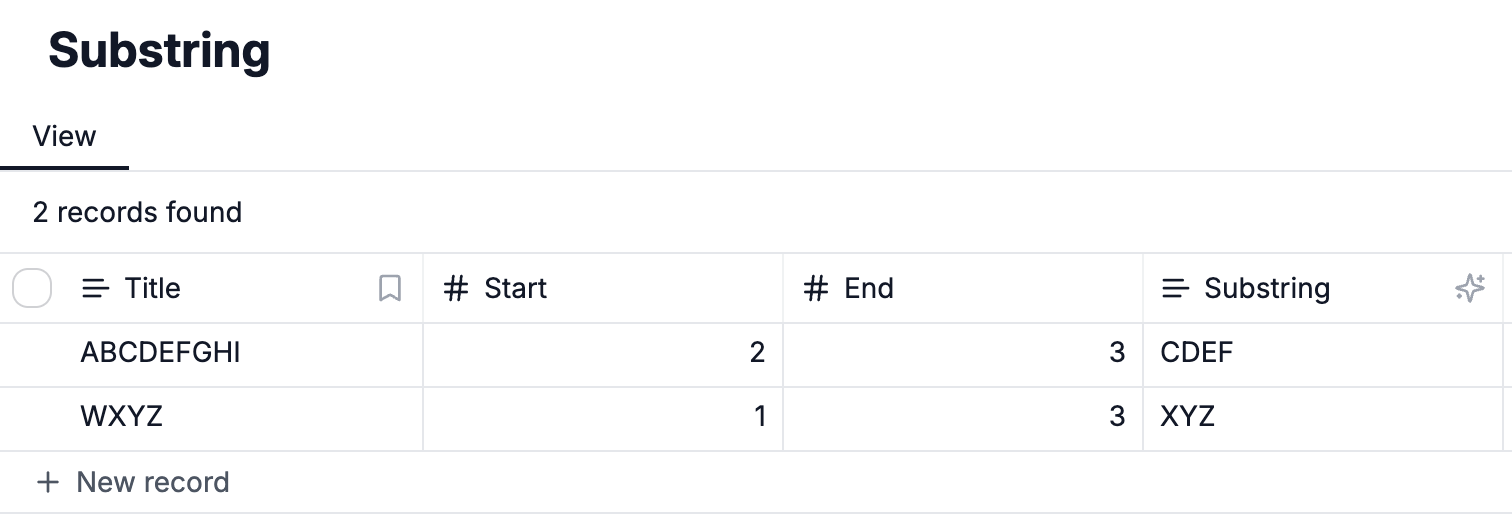Fields
In Cogfy, fields are the building blocks of your collections, enabling you to define and customize the data and operations within each record.
Think of fields as dynamic data points that can perform a wide range of functions, from simple calculations and text transformations to more advanced tasks like generating AI-driven responses or syncing with external systems.
Each field can be tailored to meet the specific needs of your workflow, giving you complete control over your data automation.
With a variety of field types to choose from, Cogfy allows you to create sophisticated and flexible workflows without the need for complex code. Explore our dedicated Fields section to dive into each type and unlock the full potential of your collections.
An example of a collection with four fields:

Field types
When creating a field, you can choose from a variety of types, from simple data types to complex ones.
Here are some of the more traditional field types that are available:
textnumberbooleandateselectionfilereferenceauthorlast editorcreated dateupdated date
In addition, Cogfy also supports more complex field types, such as:
chatchat messageconnectionjsonvectorhttp requestschedule
Cogfy also supports some service specific field types:
nuvem fiscal NFS-esendgrid inbound emailstripe customervindi billvindi customervindi subscription
Actually, the chat field is one of the most powerful functionalities of Cogfy. Read more.
Editing fields
Most fields can have its value edited manually by the user by clicking on the corresponding cell.
But the real power of fields comes from the ability to use operations to calculate them automatically.
Operations
There are operations from varying complexities.
For example, a date field can be set to the current date using the now operation,
while the selection field can be calculated by the content-categorizer operation,
which uses AI to automatically tag the content of another field.